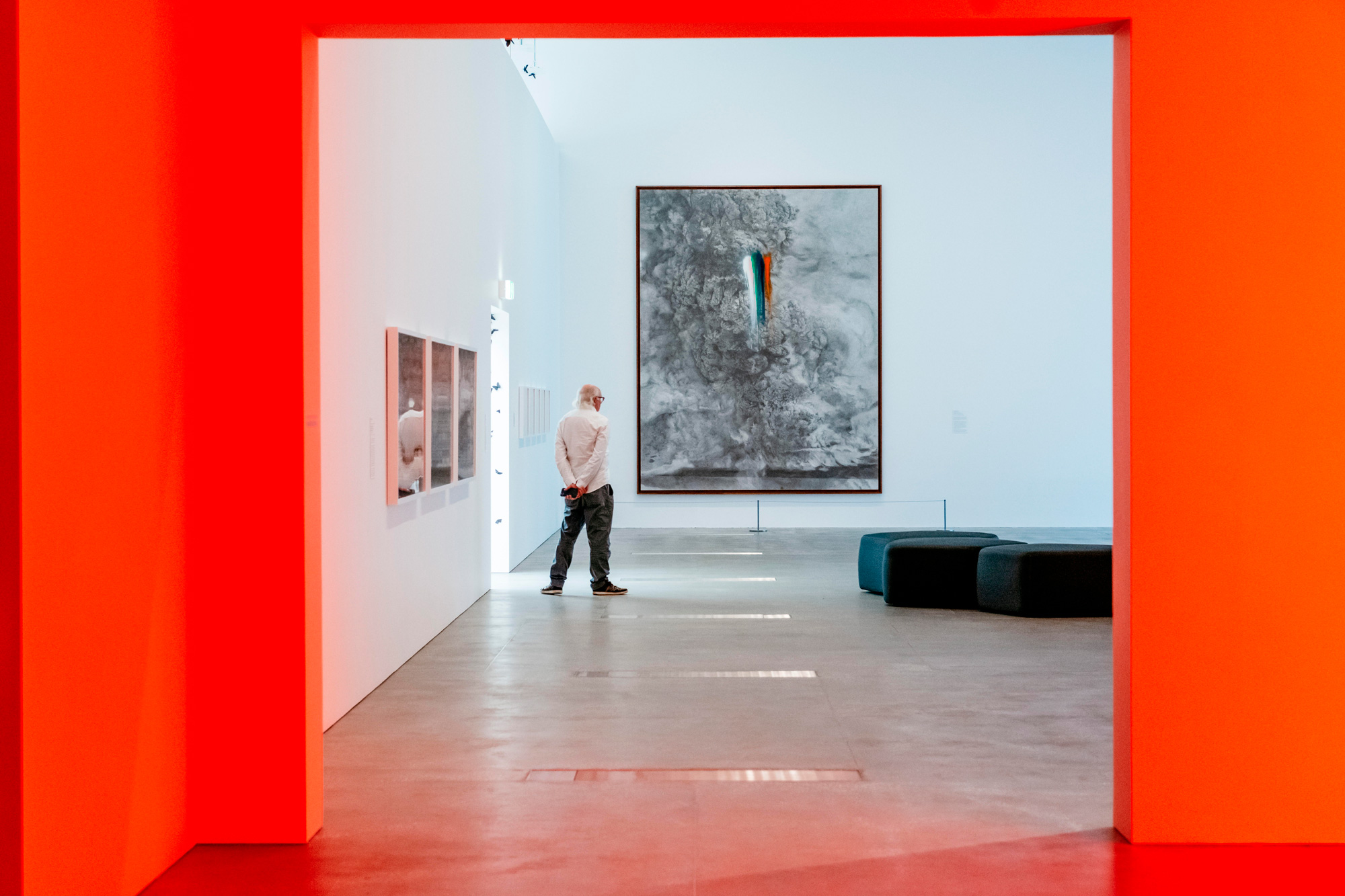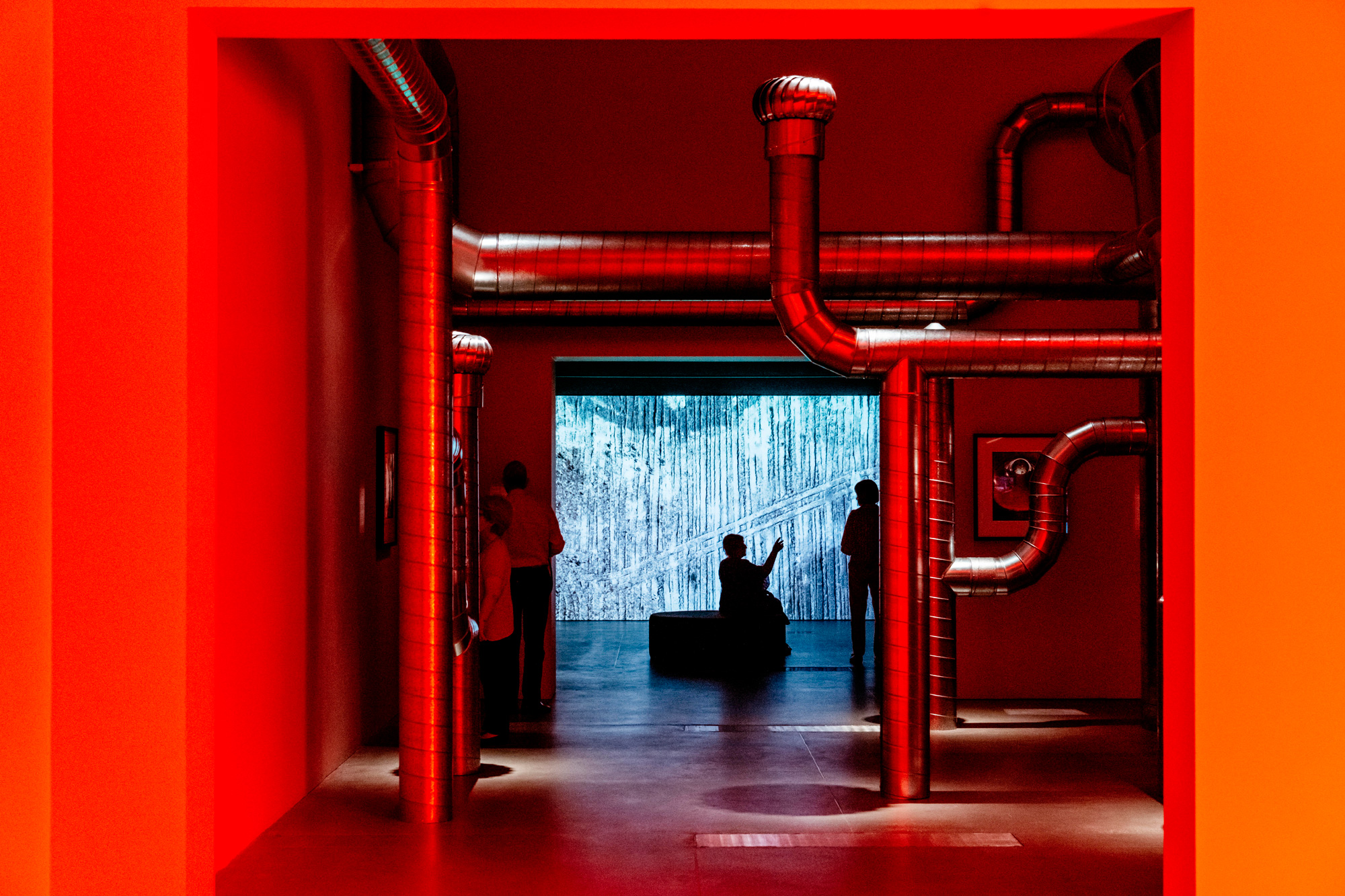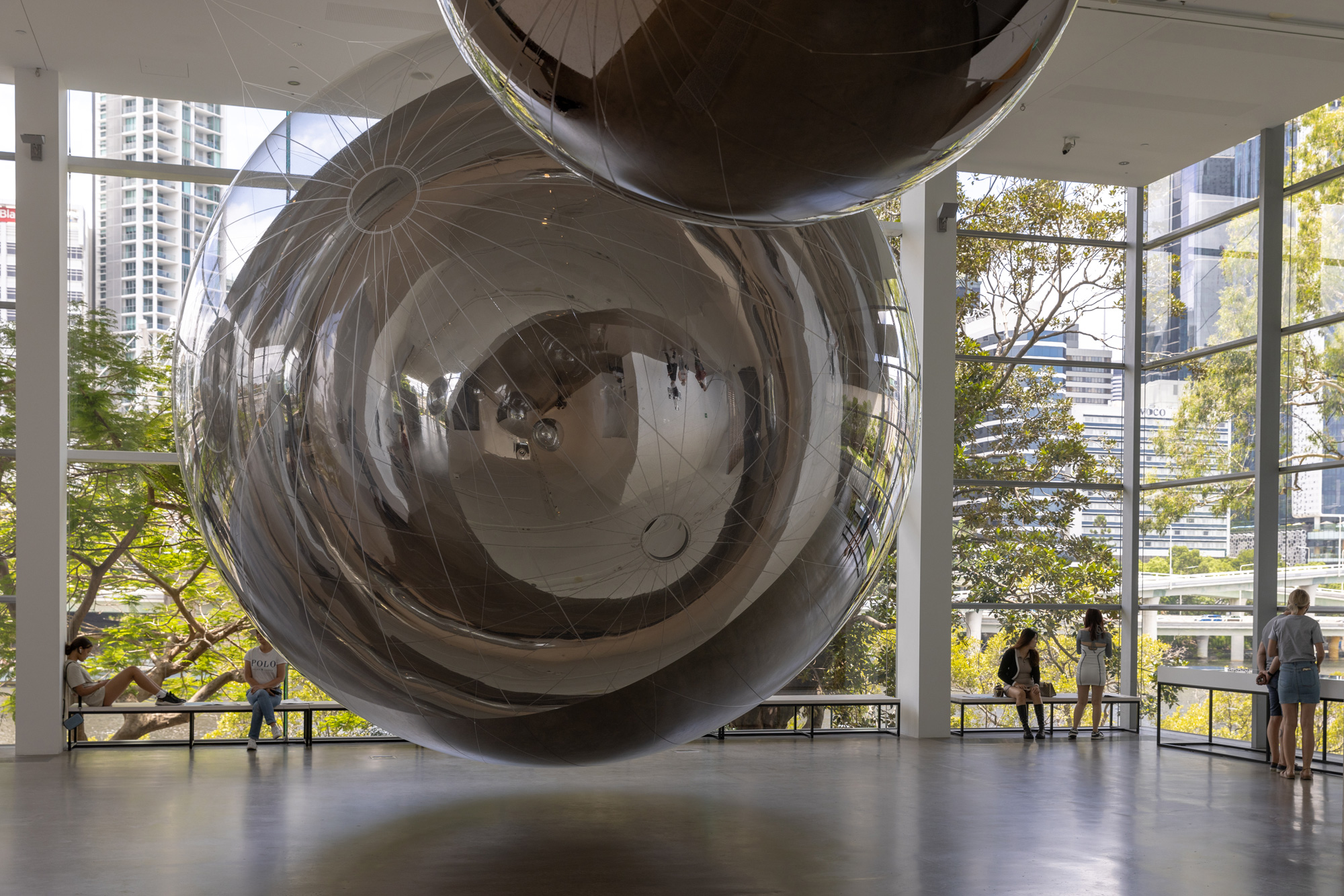Shows
“Air” of Perplexities at Queensland Gallery of Modern Art


Queensland Gallery of Modern Art (GOMA) embarked on its summer program with the opening of “Air.” Featuring works by more than 30 Australian and international artists, the group exhibition addresses the political, cultural, and ecological pressures that afflict the Earth’s natural resource, air. It follows the museum’s 2019 show “Water,” each responding to real-world ideas, histories, and challenges. Deeply reflective of the complexities faced on a local and global scale, “Air” has been shaped by five key themes: atmosphere, burn, shared, invisible, and change.

One of the first artworks in the exhibition was the sculptural installation Ventilation System (1985–92/2022) by American artist Nancy Holt, in which lengths of steel extend across a room, emanating a red glow. Air, contained within steel casing, moves through space in an industrial and manufactured process. Revealing the infrastructure that is often carefully concealed within our environment, the presence of the exposed piping in a gallery setting felt strangely confronting. It made me painfully aware of the way our built environment is dependent upon artificial ventilation systems to purify and filter pollutants from our air to make it “healthy” and “clean.” While the work was produced by Holt three decades earlier, its inclusion within the exhibition was made even more relevant given the recent airborne pandemic, Covid-19. The installation shares links with many other works in the show, which also consider compromised air quality.

Elsewhere, Australian photographer Rachel Mounsey’s series Mallacoota fires in the sky (2020) served as a reminder of the devastating 2019–20 bushfires that ravaged more than 24 million hectares of land, destroyed roughly 3,000 homes, and claimed several lives. Mounsey chose to stay in Mallacoota during the fires to document the horrific scenes unfolding in her hometown. Her photographic series depicts residents protecting their faces with towels, huddled in masses at the beach, and waiting to be rescued by the navy. With the sky stained an alarming amber, the air appears burnt in these visuals now etched into the memory of many Australians. The work serves as a distressing indicator of a changing climate.

Suspended in the gallery atrium was Argentine installation artist Tomás Saraceno’s large-scale silver orbs, Drift: A cosmic web of thermodynamic rhythms (2022). The work by Berlin-based Saraceno, best known for his interest in the planet’s atmosphere, was one of the major commissions of the exhibition. Drift is a continuation of his research into the development of carbon-free technologies and investigates the potential of travel powered by thermodynamics.
Nearby, hundreds of feathered sculptures were positioned in a sweeping, circular formation on a curved white wall in Indigenous Australian Jonathan Jones’ winged installation, untitled (giran) (2018), produced with elder Uncle Stan Grant Senior. As a collective, the installation read as a murmuration of birds. Feathers were neatly tied to six different tools including emu eggshell spoons (bagay), stone knives (galigal), animal bones awls (bingal), mussel scrapers (bindu-gaany), spears (dhala-ny), and woven items (waybarra). During an artist talk, Jones explained that giran is a Wiradjuri term that carries a dual meaning; “wind,” as well as “fear” or a “heightened sense of emotion.” By sharing this double meaning with the viewer, Jones allows us to consider the relationship between wind and fear. He explains that the artwork plays with the belief that wind bestows ancestral knowledge—imparting to me the idea that knowledge has the capacity to hinder fear.
With over 30 artists involved in the exhibition, the response to the theme of air was textured with a multitude of perspectives. The diversity of responses highlights the increasing complexity of pressures placed upon this shared resource. The exhibition was timely and reflective of contemporary concerns with reference to the airborne pandemic, recent environmental disasters such as the Australian Black Summer bushfires, the development of renewable technologies with carbon-free outputs, and opportunities for sharing Indigenous knowledge.
“Air” is on view at the Queensland Gallery of Modern Art, Brisbane, until April 23, 2023.







